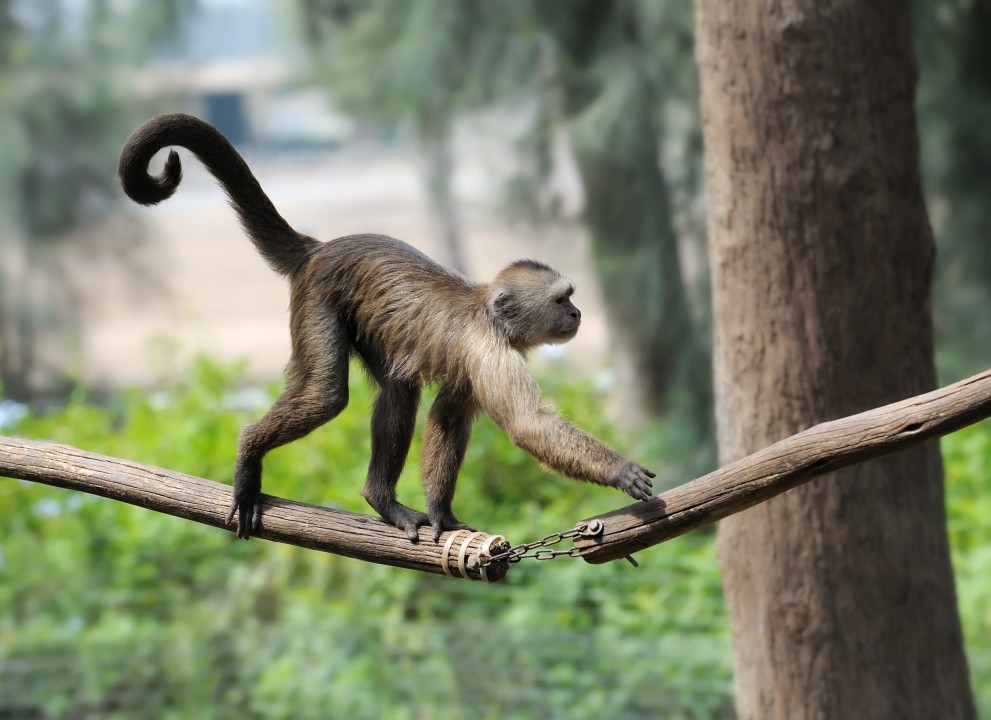
Our distant relatives, monkeys, have tails. Humans, and our closer relations the great apes, don’t. We’ve got a tailbone, to be sure, but we lack the unit extending from it.
So, what gives? How did homo sapiens, chimpanzees, and gorillas become de-tailed?
A new study concludes that the answer to that question, as is true of so many questions about human development, lies in our genes. Researchers determined that a snippet of DNA found in apes and humans, but lacking in monkeys, affects tail development. The DNA segment is called AluY, and it is inserted into a gene called TXBT. When scientists tested the segment on laboratory mice, they found it affected tail development and led to some mice born without tails.
The ancestors of humans and the great apes are believed to have lost their tails about 25 million years ago, when they evolved away from the ancestors of modern monkeys. The evolutionary change resulted in fewer tail vertebrae and the development of the coccyx–our tailbone. Scientists believe the loss of the tail may have been an evolutionary advantage that better allowed our ancestors to shift from living in trees to living on the ground–a key development in human history that led eventually to walking upright, freeing hands for tools, and other activities that are associated with human brain development. Scientists also believe, however, that the insertion of the DNA snippet may have also resulted in an increase in neural tube birth defects, like spinal bifida.
What the study doesn’t tell us is why the loss of a tail might have been an advantage to our ancestors. We know from the theory of natural selection that evolution is all about surviving to reproduce and pass on your genetic code. That suggests that tail loss either made our ancestors better able to defend themselves against predators, or better able to hunt and forage and obtain food, or it made them more attractive to potential mates. Would a prehensile tail that could be snagged or grabbed be a disadvantage in a struggle on the ground, or did ancient females find tails off-putting and a key determinant in mate selection? We’ll probably never know.












